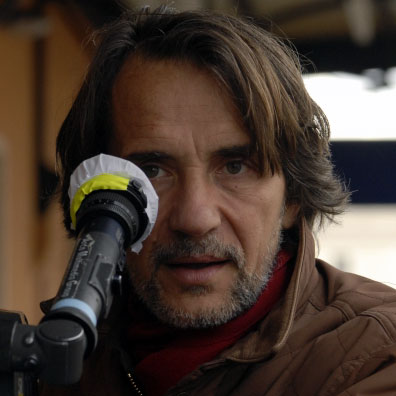Biography
The running of water and the running of film, where everything remains imprinted. Our stories, our DNA and our lives are impressed in water, our emotions, our stories and our feelings are impressed in film.Massimo Spano
Massimo Spano Rome 2/5/1958
Set Designer- Architect, Director, Producer
He began working with Tinto Brass in the film Action as assistant director, after this experience he began working in set design first as an assistant for various set designers and then became a set designer.
He has worked with directors such as Brass, Fratelli Taviani, J.Ivens, Claude Miller, Enzo Barboni, Antonio Margheriti, Sergio and Bruno Corbucci, Pasquale Festa Campanile, Capitani, Mariano Laurenti, Aldo Lado, Vittorio Sindoni, Marco Risi, Francesca Archibugi, Carlo Mazzacurati and many others.
As a set designer he realised many commercials, mainly working with the company Filmaster.
As a director, he made his debut with the film Agosto, Marciando nel Buio (awarded the Annecy and Finpresci prizes in the same year, he also participated in the Venice Film Festival in the Panorama section) distributed in France and Germany.
He began working with RAI with which he realised many miniseries all for RAI Uno and also began a fruitful collaboration with the author Laura Toscano and Franco Marotta. He won many international awards such as the prize for best female interpretation at the Biarriz international festival, Efebo d’oro,and many others for the film “i figli strappati” he was a success with the public and critics for the film “la Caccia”. The films are also a success with audiences abroad Germany, France ectHe also made two documentaries on the producer “Franco Cristaldi and his cinema paradise” presented at the Bifest in Bari and broadcast by RAI. The second, together with Giancarlo Scarchilli entitled “The King of Paparazzi” on the photographer Rino Barillari, this documentary was shown at the Rome Film Festival, won the Silver Ribbon, participated in the Venice Film Festival and won the Silver Lion for the city of Venice. From this documentary, he made an exhibition at the Maxxi, where he was also curator, and together with Scarchilli he wrote the book, also a photographic one, taken from the documentary.
He also alternates his activity as a producer with the film “Rosso Pompeiano”, a French co-production.




